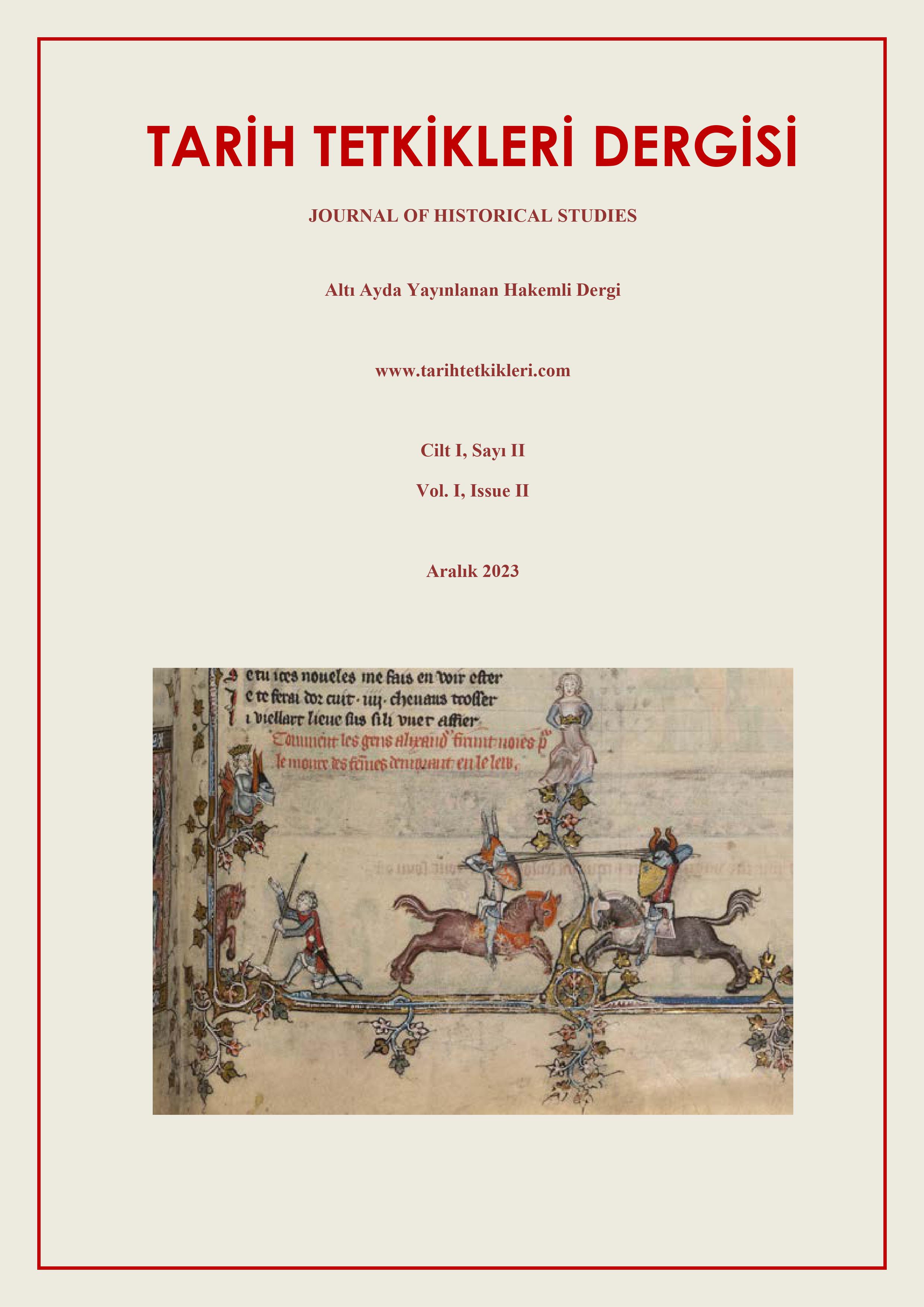The Europe as a Model. Regulation and modernization of the Ottoman fashion in the XIX century
DOI:
https://doi.org/10.5281/zenodo.10429115Keywords:
Ottoman Empire, XIX century, Selim III, Maḥmūd II, fashion, fesAbstract
In the 19th century Ottoman Empire, modernization was an issue that was considered necessary for the survival of the state and covered a wide range of issues. While the Ottoman sultans examined the reasons behind the political strengthening of the West and kept up with the developments, they also accepted steps classified as modernization. Many issues regarding modernization in Ottoman society and state administration were discussed both in those days and within the research topics of historians. In the Ottoman Empire, where interaction with the West continued almost since the day it was founded, a part of modernity was the introduction of fashion, that is, current clothing, into the Ottoman Empire from the West. The subject of this study is what kind of change and development the trends in women's and men's clothing witnessed in the Ottoman society, which experienced an industrial revolution like the one in Europe and where the Bourgeoisie did not emerge. In this context, the sources of the study consist of archive documents and copyrighted research works.
References
• C. Aktaş, Tanzimat’tan Günümüze Kılık Kıyafet ve Iktidar, Nehir Yayınları: İnceleme - Araştırma Dizisi, Istanbul, Nehir yayınları, 1989.
• P. L. Baker,The Fez in Turkey: A Symbol of Modernization, Costume, in “The Journal of the Costume Society”, 20, 1986, pp. 72-85.
• R. W. Bulliet, La civiltà islamico Cristiana. Una proposta, Laterza, Roma-Bari, 2005.
• J. P. Dunn, Clothes to Kill For: Uniforms and Politics in Ottoman Armies, in “The Journal of the Middle East and Africa”, 2, 1, 2011, pp.85-107.
• H. Exertzoglou,The cultural uses of consumption: negotiating class, gender, and nation in the Ottoman urban centers during the 19th century, in “International Journal of Middle East Studies”, 35, 1, 2003, pp. 77-101.
• A. Hatzimichali, The Greek Folk Costume, vol. II, Athens, Benaki Museum Publications, 1984.
• Ş. Hanioğlu,A Brief History of the Late Ottoman Empire, Princeton, Princeton University Press, 2008.
• U. Heyd,The Ottoman ‘Ulema and Westernization in the Time of Selım III and Mahmud II, en A. H. Hourani, P. S. Khoury, M. C. Wilson (eds.), The modern Middle East: a reader, Berkley, University of California Press, 1993.
• A. Jackson, A. Jaffer (eds.),Encounters. The Meeting of Asia and Europe, 1500-1800, London, V&A Publications, 2004.
• F. Koç, E. Koca,The Clothing Culture of the Turks, and the Entari (Part 1: History), in “Folk Life: Journal of Ethnological Studies”, 49/1, 2011, p. 22.
• R. E. Koçu,Türk Giyim, Kuşam ve Süslenme Sözlüğü, Sümerbank Kültür Yayınları 1, Ankara, Başnur Matbaası, 1967.
• M. Lale,“Sultan Mahmud II and the Fez Revolution”, in K. Çiçek (ed.), The Great Ottoman-Turkish Civilization, Philosophy, Science and Institutions, Ankara, Yeni Türkiye, 2000.
• B. Lewis,The emergence of modern Turkey, Oxford University Press, Oxford, 2000.
• A. Lütfi,“Vakanüvis Ahmed Lütfi Efendi Tarihi”, in A. Hezarfen, N. Akbayar (eds.), Tarih Vakfı-Yapı Kredi Yayınları: Eski Yazıdan Yeni Yazıya,vol. 2/3,Istanbul, Tarih Vakfı-Yapı Kredi yayınları, 1999.
• N. Micklewright,Women’s Dress in 19th century Istanbul: Mirror of a Changing Society, Tesis doctoral, Philadelphia, University of Pennsylvania, 1986.
• D. Quataert,Clothing Laws, State, and Society in the Ottoman Empire, 1720-1829, in “International Journal of Middle East Studies”, 29/3, 1997, pp. 403-425.
• Id., The Ottoman Empire, 1700-1922, Cambridge, Cambridge University Press, 2005.
• J. F. Richads,The Mughal Empire, Cambridge, Cambridge University Press, 1996.
• R. Ross,Clothing: A Global History, Cambridge, Polity, 2008.
• J. Scarce, Women’s Costume of the Near and Middle East, London, St Edmundsbury Pres Ltd, 2003.
• N. Sevin, Onüç Asırlık Türk Kiyâfet Târihine Bir Bakış, vol. 1, Ankara, Kültür Bakanlığı yayınları, 1991.
• S. J. Shaw, The origins of Ottoman military reform: the Nizam-i Cedid army of Sultan Selim III, in “The Journal of Modern History”, 37, 3, 1965.
• S. J. Shaw, E. K. Shaw,History of the Ottoman Empire and Modern Turkey, vol. II: Reform, Revolution, and Republic: The Rise of Modern Turkey, 1808-1975, Cambridge, Cambridge University Press, 1977.
• D. N. Stephanov,“Ruler Visibility, Modernity, and Ethnonationalism in the Late Ottoman Empire”, in Christine Isom-Verhaaren, K. F. Schull, Living in the Ottoman Realm: Empire and Identity, 13th to 20th Centuries, Bloomington, Indiana University Press, 2016.
• M. Tutar,Between Traditional and Modern: Men Dress Code in the Light of Turkish Modernization, Diplomski rad, Kraków, Jagiellonian University, 2014.
• M. C. Zilfi,“Whose Laws? Gendering the Ottoman Sumptuary Regime”, in S. Faroqhi, C. K. Neumann (eds.), Ottoman Costumes: From Textile to Identity, Istanbul, Eren, 2004.
Downloads
Published
How to Cite
Issue
Section
License
Copyright (c) 2023 Eros Calcara

This work is licensed under a Creative Commons Attribution 4.0 International License.



